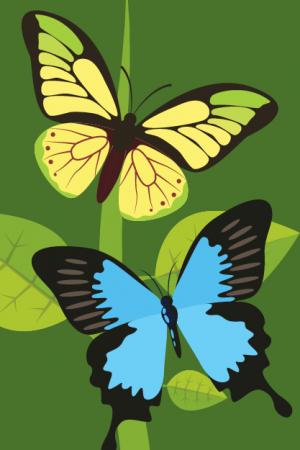Some consider bugs yucky and gross, while others are very interested in the various critters that surround us.
 Here, we will be focusing on two types of bugs: insects and arachnids. Examples of insects include butterflies, ladybugs, bees, etc. And arachnids aren’t just spiders -- other examples include scorpions and ticks.
Here, we will be focusing on two types of bugs: insects and arachnids. Examples of insects include butterflies, ladybugs, bees, etc. And arachnids aren’t just spiders -- other examples include scorpions and ticks.
First, we’ll start with what they have in common. Insects and arachnids are both arthropods, which means they have a hard outside, or exoskeleton. As you probably know, skeletons give a body structure; in humans, our skeletons are inside our bodies and made of bone. In arthropods, their skeletons face outside, and are made of something called chitin. An exoskeleton keeps squishy insides protected, which is especially helpful when you’re small enough to be squashed easily! A simple way for young learners to understand this is to use a piece of fruit for comparison. A banana or orange has a tough skin protecting it from things like bugs. Many fruits/vegetables have a hard outside, and a squishy inside, just like arthropods.
Because this hard exoskeleton doesn’t stretch, both insects and arachnids grow by molting, or shedding their exoskeletons. The new exoskeleton hardens quickly after a molt occurs.
Both insects and arachnids also rely on ways to protect themselves from their predators. By using camouflage, bugs can blend into their surroundings. This tricks the predator that wants to eat them, and they can fly, dig, scurry, or crawl away. Would it be easy to find a yellow butterfly in a field of all yellow flowers? Or, would it be easier to find a pink butterfly in that same field of yellow? That’s camouflage at work!
Another type of protection can be warning coloration. This is what the bright monarch butterfly and poison dart frogs use as a message to say, “STOP! Don’t eat me, I could be poisonous!” Similar to what we do when we see a stop sign; we stop and look for danger.
Those are some of the big similarities between insects and arachnids. So now, let’s learn about differences! Probably the best known way to differentiate between the two is by counting the number of legs: Insects have six, and arachnids have eight. But that’s only the beginning! Their bodies are quite different, too.
All adult insects have three main body parts: head, thorax, and abdomen. Sometimes, these parts are easily differentiated by sight, and some are a little trickier to see, but they’re always there. And remember those six legs insects have? All of them originate in the middle body part, the thorax.
Arachnids, on the other hand, only have two main body parts: the cephalothorax and the abdomen. All eight arachnid legs originate from the cephalothorax.
We now know that both insects and arachnids are arthropods, meaning they have an exoskeleton. We also know that they differ in the number of legs and body parts. The most important thing to remember, though, is that BOTH are vital to a healthy ecosystem and play their own important roles. For instance, the cockroach can be good for the earth because they eat all the waste that is around; the bees and butterflies are pollinators, and we need them to grow fruit and vegetables. So, next time you see a multi-legged friend, say thank you for making our environment more diverse and vibrant.
Vocabulary and Definitions
Insect: A small and often winged arthropod having six jointed legs and a body formed of a head, thorax, and abdomen plus two antennas.
Arthropod: An animal that has segmented bodies. Each body segment usually has a pair of appendages. The appendages can be antennae, wings, legs, or mouthparts.
Camouflage: The use of a combination of materials, light, or color that makes an animal blend in with its environment, or makes it harder to spot.
Exoskeleton: A rigid external covering for the body in some invertebrate animals, especially arthropods, providing both support and protection.
Turn and Talk
Use these prompts to start a conversation.
- What bug do you like best? Why?
- Do you think some bugs are gross? Why?
- What is your favorite color of butterfly?
- Where do we find bugs?
- If you could have a bug for a pet, which would you choose? Why?
- Can you tell a story about your pet bug if you had one?
Explore MPM's Exhibit
Google Street View
Take a virtual walk through the Museum’s Puelicher Butterfly Wing!
At Home
Compare and Contrast
Insect Observations
Wings of a Butterfly
Butterfly Coloring


